Classroom interaction in second language learning written and narrated by Dr. Mohammad Hossein Hariri Asl
Author: Dr. Mohammad Hossein Hariri Asl
Video of classroom interaction
Abstract
In the middle of the 1980s, Long developed the Interaction Hypothesis, which challenged Krashen’s Input Hypothesis. Long’s theory was emphasizing this point that comprehensible input was not sufficient for SLA. He believed that both input and interaction are to be present. This study was carried out to cast more light on the impact of interaction in second language classroom. These days, the concepts of genuine communication, classroom interaction, and peer work are of central importance. Scholars in the field of TEFL agree that interaction, negotiation of meaning and form between the teacher and the students and a proper use of teacher talk can create a classroom context, which is optimum for second language acquisition. In this response, establishing rapport, mutual trust and respect, and cooperative learning seem to facilitate classroom interaction.
Interaction Hypothesis

The interaction hypothesis is a development of the input hypothesis (Long, 1985, as cited in Davies & Elder, 2006). The prerequisite for learning is still seen as comprehensible input, but attention is now drawn to the conditions that enable comprehensible input to be made available. The hypothesis argues that this is most likely to occur in situations of social interaction. These provide opportunities for the negotiation of meaning, requests for clarification, and comprehension checks.
The line of research that focuses on the interactional structure of conversation was developed in the following years by many researchers (see, e.g., Gass and Varonis, 1985, 1989; Long, 1981, 1983; Pica, 1987, 1988; Pica and Doughty, 1985; Pica, Doughty, and Young, 1986; Pica, Young, and Doughty, 1987; Varonis and Gass, 1985a). The emphasis is on the role which negotiated interaction between native and non-native speakers and between two NNSs plays in the development of a second language.
Interactionist theories of L2 acquisition acknowledge the importance of both input and internal language processing (Ellis, 1997). Learning takes place as a result of a complex interaction between the linguistic environment and the learner’s internal mechanisms.
The increased focus on the role of attention and noticing in SLA is also reflected in recent interaction research exploring the effects of the linguistic environment on the learner’s cognitive processes (e.g., Gass, 1997; Long, 1996, as cited in Leeman, 2003). Following on the heels of Krashen’s (1977, as cited in Leeman, 2003) input hypothesis, which maintained that exposure to communicative input in a setting that promotes comprehension and reduces anxiety is the sole requirement for SLA, Long (1983, as cited in Leeman, 2003) hypothesized that input, although necessary, is insufficient for L2 development.
Long argued that, in addition to input, participation in interaction is also required. His initial version of the interaction hypothesis purported that interaction promotes development by facilitating comprehension, which in turn fosters development.
According to Cook (2008), the most obvious drawback to the interaction approach is that, while there is considerable research describing how interaction occurs, there is still little proof of its importance to second language learning rather than to second language comprehension, whether correction or recasts. Lightbown and Spada (2006) recommend recasts rather than corrections with adults, but not with children, as learners seem to hear them as confirmation of meaning rather than correction of form.
Classroom interaction
Communicative Language Teaching relies heavily on the value of interaction – of live, person-to-person encounters (Allwright, 1984). The initial purpose of CLT was to understand each other’s intended meanings by comprehending not only the words but the speech acts and notions behind the words (Kramsch, 2005).

In the 1980s, a communicative orthodoxy developed which saw much traditional ELT classroom communication as undesirable by comparison with ‘genuine’ or ‘natural’ communication (Seedhouse, 1996).
The underlying assumption of ‘classroom interaction’ is, as Allwright (1984, as cited in Ellis, 2008) proposed, is “the fundamental fact of classroom pedagogy” because “everything that happens in the classroom happens through a process of live person-to-person interaction” (p. 156).
Allwright (1984) argues that in order for lessons to take place at all, classroom interaction has to be managed, and by all present, not just by the teacher. This in turn leads to the central point that it is through this joint management of interaction in the classroom that language learning itself is jointly managed. The importance of interaction in classroom language learning is precisely that it entails this joint management of learning. According to Allwright (1984), we can no longer see teachers simply as teachers, and learners simply as learners, because both are, for good or ill, “managers of learning” (Allwright, 1984, p. 156).
Most classroom interaction is structured so that students can display to their teacher their knowledge and skills, whether this be in regard to a second language, subject matter, or a content area (Pica, 1987). The teacher is perceived as both language expert and evaluator. The students come to the lesson as subordinates, seeking the teacher’s expertise to guide and evaluate the progress of their learning. Decisions as to what knowledge and skills are to be displayed are therefore seldom within the student’s control, but rather, are shaped, or, unfortunately, at times, constrained by the teacher’s elicitations and directives.

Moskowitz (1971, 1976, as cited in Brown, 2007) proposed some categories for observation of classes known as the FLINT (Foreign Language Interaction Analysis) model. First, this model gives you a taxonomy for observing other teachers. Seconded, it gives you a framework for evaluating and improving your own teaching. And third, it helps to set a learning climate for interactive teaching.
Kumaravadivelu (1999, as cited in Barkhuizen & Ellis, 2005) outlines the aims and practices of ‘classroom interaction analysis’. These typically involve the use of an observation instrument or scheme ‘consisting of a finite set of preselected and predetermined categories for describing certain verbal behaviours of teachers and students as they interact in the classroom.
The most well-known schemes are FLINT (Foreign Language Interaction Analysis) and COLT (Communicative Orientation of Language Teaching) (Allen, Frohlich & Spada, 1984, as cited in Barkhuizen & Ellis, 2005).
These schemes, according to Kumaravadivelu (1999, as cited in Barkhuizen & Ellis, 2005) share four limitations:
- They focus exclusively on the product of verbal behavior of teachers and learners and give little or no consideration to classroom processes or to learning outcomes.
- They depend on quantitative measurements, thereby losing the essence of communicative intent that cannot be reduced to numerical codification.
- They are unidirectional in that the information flow is generally from the observer to the teacher.
- They are unidimensional in that the basis of observation is largely confined to one single perspective, that of the observer.
Classroom discourse

According to Nunan (2001), classroom discourse is a distinctive type of discourse that occurs in classrooms. It includes unequal power relationships, which are marked by unequal opportunities for teachers and pupils to nominate topics, take turns at speaking, etc. The typical pattern of interaction in all sorts of classrooms is one in which the teacher asks a question to which he/she already knows the answer, one or more pupils respond, and the teacher evaluates the response.
According to Pica (1987), the interactional structure of classroom discourse enables the teacher to hear from as many students as possible. If the teacher were to take time with each student for individual negotiations aimed at mutual comprehension of message meaning, the result would be that very few topics could be covered, and not all students could take turns at displaying their knowledge.
Gibbons (2003, as cited in Johnson, 2009) argues that dialogic strategies during moment-to-moment interactions, including mode shifting, signaling how students can self-reformulate, indicating where a reformulation is needed, and modeling alternative ways of recontextualizing personal knowledge, recoding students’ everyday meanings and recasting them into more scientific terminology create a bridge between the students’ current language proficiency and the discourse of the science curriculum because the science discourse builds on what the students already know, but it is being used in meaningful interaction and purposeful activity.
As Long (2005) has stated, language can be looked at from a micro-analytic perspective, whereby interactional moves can be studied to investigate types of speech acts, illocutionary force, and features of conversation, such as repetition, feedback and back-channeling. A macro-level view of target discourse analysis can look at how a task is completed, considering, among other things, open-endedness, implicitness, inter-textuality, phatic talk, and structural non-fluencies, such as filters and incomplete sentences.
Classroom context mode
According to Nunan (2003), in classroom context mode, opportunities for genuine, real-world-type discourse are frequent and the teacher plays a less prominent role, taking a back seat and allowing learners all the space they need. The principal role of the teacher is to listen and support the interaction, which often takes on the appearance of a casual conversation outside the classroom.

According to Cullen (1998), in the context of the classroom, the interaction can be considered communicative in that the entire sequence manifests a focus on message content, the teacher’s questions are carefully structured, the feedback is clear and the use of echoing serves to ensure that the students’ attention is not lost.
According to Breen and Candlin (1980, as cited in Ellis, 2003), the classroom context constitutes a communicative environment in its own right that is distinct from the communicative context of the world outside and on these grounds, has challenged the basis for assessing the communicativeness of classroom discourse.
In relation to the possibility of creating a classroom context that is close to the real-life situation, Widdowson (2003) argues:
The classroom contexts within which language has usually to be learnt are totally different from those within which the language is used. You cannot simply replicate the sociocultural conditions which made the language actual for its users in the first place. Of course, you can to some degree modify classroom contexts, but that is simply to say that you contrive conditions to make them approximate more closely to the reality of use (p. 112).
Genuine communication
Nunan (1987, as cited in Seedhouse, 1996) states:
Genuine communication is characterized by the uneven distribution of information, the negotiation of meaning (through, for example, clarification requests and confirmation checks), topic nomination and negotiation by more than one speaker, and the right of interlocutors to decide whether to contribute to an interaction or not. In other words, in genuine communication, decisions about who says what to whom and when are up for grabs (p. 137).
In response to genuine communication, Mitchell, 1988, as cited in Cullen, 2001) argues:
No functional syllabus, authentic materials, or micro-computer program can replace the capacity of the live, fluent speaker to hit upon topics of interest to particular individuals, continually adjust his/her speech to an appropriate level of difficulty and solve unpredictable communication problems from moment to moment, or to ‘scaffold’ the learner’s attempts at FL speech. In all this the teacher and his/her interactive skills are decisive. (p. 166).
In terms of genuine communicative classrooms, Cullen (1998) states, “Communicative classroom are held to be those in which features of genuine communication are evident, and, by exclusion, classes where they are not present are considered to be uncommunicative” (p. 179).
Communication strategies

Wagner and Firth (1997) and Williams (1997, as cited in Foster-Cohen, 2004) propose an ‘out-there’ approach to communication strategies. They take communication strategies as interactional and as evidence of the negotiation of meaning between individuals. On the other hand, Tarone (1977, as cited in Foster-Cohen, 2004) and Faerch and Kasper (1986) pioneered the analysis of second language communication strategies as psycholinguistic, thus encouraging an ‘in here’ account.
Second language learners have to attend to many unpredictable, changing features of a dynamically complex communicative environment. The input to the L2 user can be a critical factor in shaping the way the individual engages in the “negotiation of meaning” (Long, 1996, as cited in Doughty & Long, 2003). Second language communication requires one to draw on linguistic knowledge and various cognitive strategies in order to meet immediate communicative needs, just as in the case of complex simulation games.
Task-based instruction
It is widely argued that engaging in communicative language tasks helps a learner to develop in an L2 in several ways. Tasks provide an opportunity not only to produce the target language, but also, through conversational adjustments, to manipulate and modify it (Foster, 1998).
On the surface, teachers appear to be eclectic in their practice. Over time they build up practical skills that involve dealing with the interaction of the complex array of factors within classroom work (Anning, 1988, as cited in Breen, Hind, Milton, Oliver & Thwaite, 2001).
Information gap tasks were introduced to the SLA research context by Long (1980, as cited in Kang, Pica & Sauro, 2006) in order to address questions on input and interaction.
The continuum from focus on form to focus on meaning is taken as representing ‘task-types’ in task-based learning or ‘activity-types’ within the communicative approach. In this respect, task-based learning can be seen as a development within the communicative approach (Littlewood, 2004).
Small group work
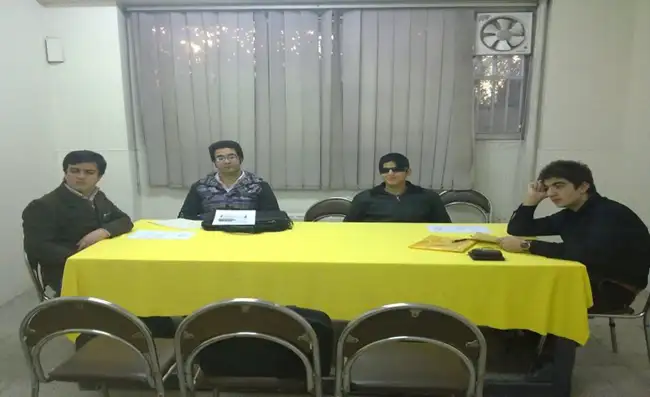
Small group work is seen as beneficial in several ways. According to Foster (1998), it increases the amount of class time available to an individual student to practice speaking the target language; it decreases the amount of time students spend listening (or not listening) to other class members interacting with the teacher; it avoids the anxiety and self-consciousness that prevent some students from speaking up in front of the whole class; it allows the teacher more opportunity for individual instruction. In sum, it can help to create a positive and relaxed learning environment.
According to Brown (2004), oral production assessment (interactive and extensive speaking) include tasks that involve relatively long stretches of interactive discourse (interviews, role plays, discussions, games) and tasks of equally long duration but that involve less interaction (speeches, telling longer stories, and extended explanations and translations).
Peer-assessment appeals to a set of principles, the most obvious of which is ‘cooperative learning’. According to Brown (2004), “peer-assessment is simply one arm of a plethora of tasks and procedures within the domain of learner-centered and collaborative education” (p. 270).
Using buzz groups

Apart from tackling anxiety and attitudes towards learner role, teachers need to create an affective environment and more opportunities favorable to uninhibited yet focused talk. According to Littlewood and Liu (1997), the use of small discussion or buzz groups should achieve such a purpose. Students could be gently eased into a more active role by small discussion groups of no more than six people. According to Littlewood (1996), small group interactions can encourage learners to be ready to take risks and make errors in communication, e.g. by creating a non-threatening atmosphere.
Interaction among peers does not always run smoothly (Cohen, 1986; Cohen & Lotan, 1997; Foster, 1998; Foster & Ohta, 2005, as cited in van den Branden, 2006). Problems that often arise in group interaction have to do with domination (one pupil dominates the task performance, reducing the other members’ chances of contributing), non-involvement and, consequently, non-participation, the ‘free rider effect’ (one pupil does all the hard work while the others profit), the diffusion of responsibility (some pupils are simply ignored, their ideas are not taken into consideration, while pupils with a higher status do not bother to explain what is happening) and the absence of interactional processes, such as the negotiation for meaning.
Negotiation of meaning
Checking and clarifying problem utterances (negotiating for meaning) ensures that task participants receive comprehensible input and generate comprehensible output, both of which have been claimed as crucial to SLA (Foster, 1998).
Jepson (2005, as cited in Bailey & Nunan, 2009) defines negotiation of meaning as “a cognitive process that speakers use to better understand one another, that is, to increase the comprehensibility of language input” (p. 79).
Researchers such as Gass & Varonis, 1984, as cited in Pica, 1988) have highlighted NNS interlanguage modification in their analyses, providing both a theoretical model of negotiated interaction and many illuminating examples of the impact of such interaction on interlanguage production.
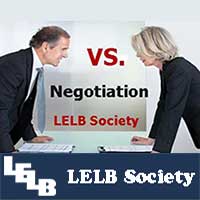
According to Hatch (1978, 1983), Krashen (1981, 1982) and Long (1981, 1983, as cited in Pica, 1987), it is believed that learners can advance their receptive and expressive capacities in a second language if they obtain their interlocutors’ assistance in understanding linguistic material not currently within their linguistic repertoire.
More direct evidence of the importance of negotiated interaction comes from a number of studies. In one (Pica, Young & Doughty, 1987, as cited in Gass & Selinker, 2008), the researchers showed that there was better comprehension by a group of second language learners who were allowed interaction in the completion of a task versus those who were not allowed interaction but who were provided with modified input.
Furthermore, the students can benefit from ‘negotiated curriculum’ in which the teacher decides that rather than develop the detailed content of the program in advance, he/she will involve the students in the development of the program’s goals and content (Richards, 2009).
Interactive teacher
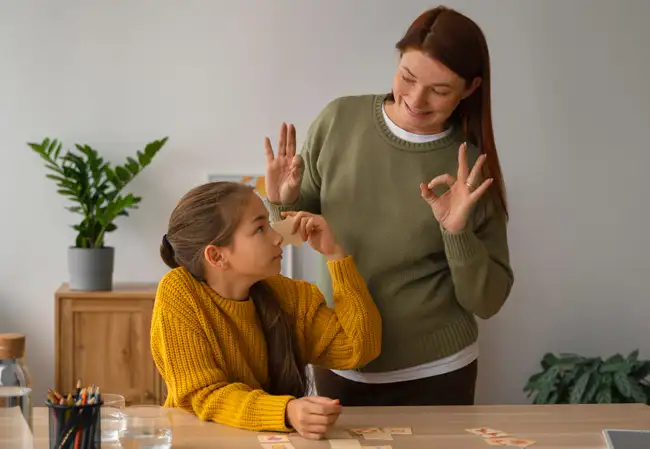
According to Brown (2007), an interactive teacher is one who is fully aware of the ‘group dynamics’ of a classroom. As Dörnyei and Murphy (2003, as cited in Brown, 2007) explained, the success of classroom learning is very much dependent on how students relate to each other, what the classroom environment is, how effectively students cooperate and communicate with each other, and of course what roles the teacher and learners play. According to Barcelos, Harrington, Lavine, Longhini, Oxford, Saleh and Tomlinson (1998), teacher roles are often best described in the form of metaphor: teacher as manufacturer, teacher as doctor, teacher as judge, teacher as gardener, and so on.
The most important key to creating an interactive language classroom is the initiation of interaction by the teacher (Brown, 2007). One of the best ways to develop your role as an initiator and sustainer of interaction is to develop a repertoire of questioning strategies. According to Brown (2007), in second language classrooms, where learners often do not have a great number of tools for initiating and maintaining language, teacher’s questions provide necessary stepping stones to communication.
Interactional adjustment
In considering how learners manage to understand the meaning of language whose forms they have not yet acquired, Long (1985, as cited in Foster, 1998) concludes that general knowledge, knowledge of the context, and the ability to interpret extra-linguistic clues all play a role, but the most important way learners make input comprehensible is by interactional adjustments, i.e. requesting the interlocutor to clarify problem utterances and thus render them comprehensible. In this way, successful communication is assured and the learner gets exposure to new target language forms.
Teacher talk
In the case of teacher talk, several criteria might be used to assess aspects of classroom language use as the kind of questions teachers ask their students, or the way they respond to student contributions (Cullen, 1998).
According to Cullen (2002), a particular aspect of ‘teacher talk’ is the teacher’s provision of feedback or follow-up’ in classroom discourse. In this response, the ‘F-move’ refers to ‘Follow-up’ or ‘Feedback Move’ identified by Sinclair and Coulthard (1975, as cited in Cullen, 2002) in their new well-known analysis of classroom discourse, as the third move in the IRF exchange structure, standing for ‘initiation-response-feedback’.
One of the most frequent classroom interaction structures between the teacher and students is ‘initiation-response-feedback’ (IRF). Cook (2008) defines IRF in this way:
- Initiation: The teacher takes the initiative by requiring something of the students.
- Response: Next, the student does whatever is required.
- Feedback: The teacher does not go straight on to the next initiation but announces whether the student is right or wrong (pp. 156-157).
With regard to the significance of ‘feedback’ in SLA classrooms, Sinclair and Coulthard (1975, as cited in Cullen, 2002) argue, “So important is feedback that if it does not occur we feel confident in saying that the teacher has deliberately withheld it for some strategic purpose. It is deviant to withhold feedback continually” (p. 51).
According to Cazden (1987, as cited in Kaplan, 2002), there is a ‘default script’ in classroom interaction. In the default script, the teacher constructs the overwhelming proportion of initiating and responding turns, as well as framing utterances that function to bring the activity into being, move it forward, and draw it to a close, in that it is “what happens unless deliberate action is taken to achieve some alternate” (p. 53).
IRF was the format of the classic language laboratory drill. Other styles of teaching, such as the communicative, may discourage it because it is restricted to classroom language rather than being generally applicable (Cook, 2008). IRF fails to give the students opportunities to ask questions themselves, nominate topics of interest to them, and negotiate meaning (Nunan, 1987). In short, it is associated with a heavily teacher-centered classroom methodology.
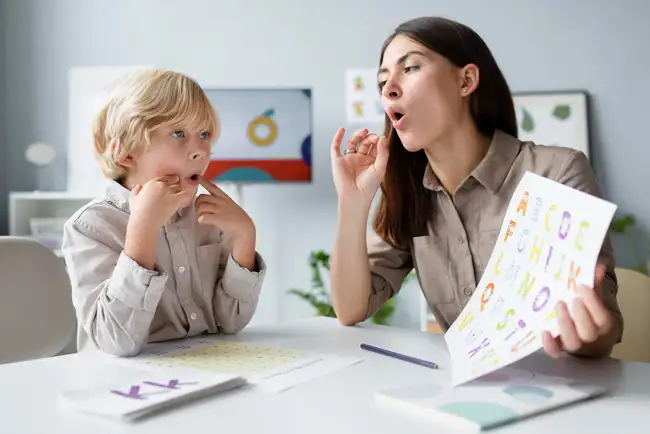
According to McCarthy (1991), when IRF happens, pupils will have the chance to practice only a very impoverished range of utterance functions. In much language classrooms, learners rarely get the opportunity to take other than the responding role, and even in cases, where students are encouraged to initiate, the follow-up move is often still in the hands of the teacher, and learners get little or no practice in this particular discourse function.
So language teachers have developed a number of techniques to compensate for this. They ask learners to engage in role play, or to compose dialogues, and so on. In particular, according to Willis and Willis (2007), tasks give learners the chance to produce real and extended discourses of their own.
As Long and Sato (1983, as cited in Kaplan, 2002) have stated, interaction in communicative classrooms based on CLT, bear little resemblance to conversations but are characterized by more typical teacher-talk features, such as display questions. As a result, Long and Sato suggest that contrary to the recommendations of many writers of SL teaching methodology, communicative use of the target language makes up only a minor part of typical classroom activities.
The attempt in CLT to facilitate language learning useful for nonclassroom contexts has been represented through the use of role-plays, jigsaw activities, and various types of pair and small-group work, since these allow students to assume interactional roles outside those afforded by the default script.
Error correction
Interaction research has begun to explore the effects of specific interactional features on L2 development and has found that various types of negative feedback seem to promote linguistic development (e.g., Long, Inagaki, & Ortega, 1998; Mackey & Philp, 1998; Muranoi, 2000, as cited in Leeman, 2003).
According to McDonough (2002), errors are no sin, but an integral part of language development, and consequently errors will disappear as the learner’s language resources grow. In other words, learners will grow out of errors. As a result, an interactional view of maturation would see a role for knowledge of results.
Criticism
According to Kumaravadivelu (2006), although classroom interaction by definition includes learner production, the role of learner output in L2 development was not given any serious consideration for a long time. The scope of interaction as a linguistic activity has now been extended to include the effect of learner output, particularly after the emergence of two output-related hypotheses: the comprehensible output hypothesis (Swain, 1985, as cited in Kumaravadivelu, 2006) and the auto-input hypothesis (Schmidt & Frota, 1986, as cited in Kumaravadivelu, 2006).
As Pica (1987) has said:
Opportunities to modify and restructure interaction towards mutual comprehension seldom arise in the language classroom, because a necessary precondition for interactional modification is often lacking in the design and organization of classroom activities (p. 11).
She (1987) further continues that there are three additional reasons why many language-learning activities bring few opportunities for classroom participants to modify and restructure their interaction towards mutual comprehension:
- Many activities offer classroom participants opportunities to avoid interaction geared towards mutual comprehension.
- Mutual comprehension is often built into classroom discourse; there is little need to restructure interaction in order to achieve it.
- Attempts to achieve comprehension through restructuring of social interaction may be misinterpreted as challenges to the teacher.
Conclusion
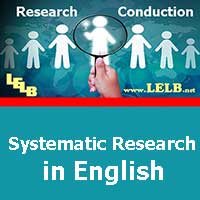
According to Pica (1991), there is a need for longitudinal studies which reveal how learners evolve into better comprehenders through classroom interaction and negotiation of meaning. Longitudinal studies may show how, as learners become better comprehenders of L2 input, they can become more versatile in their approach to comprehension tasks.
In addition to teacher’s questioning patterns, the quality and character of classroom interaction most certainly shapes the nature of the assistance given by the teacher (Johnson, 2009).
In conceptualizing teaching as dialogic mediation, the teacher’s discourse is contingent because what teachers say depends in large part, on the shared meanings and goals of both the teacher and the students as well as the teacher’s ability to understand the students’ attempt to communicate ideas (van Lier, 1996, as cited in Johnson, 2009).
References
- Allwright, R. L. (1984). The importance of interaction in classroom language learning. Applied Linguistics, 5(2), 156-171. doi: 10.1093/applin/5.2.156
- Bailey, C. M., & Nunan, D. (2009). Exploring second language classroom research: A comprehensive guide. Boston, MA: Heinle, Cengage Learning.
- Barcelos, A., Harrington, C., Lavine, R. Z., Longhini, A., Oxford, R. L., Saleh, A., & Tomlinson, S. (1998). Clashing metaphors about classroom teachers: Toward a systematic typology for the language teaching field. System, 26, 3-50. doi:10.1016/S0346-251X(97)00071-7
- Barkhuizen, G., & Ellis, R. (2005). Analyzing learner language. Oxford: Oxford University Press.
- Breen, M. P., Hind, B., Milton, M., Oliver, R., & Thwaite, A. (2001). Making sense of language teaching: Teachers’ principles and classroom practices. Applied Linguistics, 22(4), 470-501.
- Brown, H. D. (2004). Language assessment: Principles and classroom practices. White Plains, NY: Pearson Education, Inc.
- Brown, H. D. (2007). Teaching by principles: An interactive approach to language pedagogy (3rd Ed.). White Plains, NY: Pearson Education, Inc.
- Cook, V. (2008). Second language learning and second language teaching. London: Hodder Education, Inc.
- Cullen, R. (1998). Teacher talk and the classroom context. ELT Journal, 52(3), 179-187. doi:10.1093/elt/52.3.179
- Cullen, R. (2001). The use of lesson transcripts for developing teachers’ classroom language. System, 29, 27-43. doi:10.1016/S0346-251X(00)00044-0
- Cullen, R. (2002). Supportive teacher talk: The importance of the F-move. ELT Journal, 56(2), 117-127. doi:10.1093/elt/56.2.117
- Davies, A., & Elder, C. (2006). The handbook of applied linguistics. Malden, MA. USA: Blackwell Publishing, Ltd.
- Doughty, C. J., & Long, M. H. (2003). The handbook of second language acquisition. Malden, MA: Blackwell Publishing, Ltd.
- Ellis, R. (1997). Second language acquisition. Oxford: Oxford University Press.
- Ellis, R. (2003). Task-based language learning and teaching. Oxford: Oxford University Press.
- Ellis, R. (2008). The study of second language acquisition. Oxford: Oxford University Press.
- Faerch, C., & Kasper, G. (1986). The role of comprehension in second language learning. Applied Linguistics, 7(3). doi:10.1093/applin/7.3.257
- Foster, P. (1998). A classroom perspective on the negotiation of meaning. Applied Linguistics, 19(1), 1-23. doi:10.1093/applin/19.1.1
- Foster-Cohen, S. H. (2004). Relevance theory, action theory and second language communication strategies. Second Language Research, 20(3), 289-302. doi:10.1191/0267658304sr242oa
- Gass, S. M., & Selinker, L. (2008). Second language acquisition: An introductory course. New York: Routledge, Taylor and Francis Group.
- Johnson, K. E. (2009). Second language teacher education: A sociocultural perspective. New York: Routledge Taylor & Francis Group.
- Kang, H., Pica, T., & Sauro, S. (2006). Information gat tasks: Their multiple roles and contributions to interaction research methodology. SSLA, 28, 301–338. doi:10+10170S027226310606013X
- Kaplan, R. B. (2002). The Oxford handbook of applied linguistics. Oxford: Oxford University Press.
- Kramsch, C. (2005). Post 9/11: Foreign languages between knowledge and power. Applied Linguistics, 26(4), 545-567. doi:10.1093/applin/ami026
- Kumaravadivelu, B. (2006). Understanding language teaching, from method to postmethod. Mahwah, New Jersey: Lawrence Erlbaum Associates, Inc.
- Leeman, J. (2003). Recasts and second language development: Beyond negative evidence. SSLA, 25, 37–63. doi:10.1017/S0272263103000020
- Lightbown, P. M., & Spada, N. (2006). How languages are learned. Oxford: Oxford University Press.
- Littlewood, W. (1996). “Autonomy”: An anatomy and a framework. System, 24(4), 427-435. doi:10.1016/S0346-251X(96)00039-5
- Littlewood, W. (2004). The task-based approach: Some questions and suggestions. ELT Journal, 58(4). doi:10.1093/elt/58.4.319
- Littlewood, W., & Liu, N. F. (1997). Why do many students appear reluctant to participate in classroom learning discourse? System, 25(3), 371-384. doi:10.1016/S0346-251X(97)00029-8
- Long, M. H. (2005). Second language needs analysis. Cambridge: Cambridge University Press.
- McCarthy, M. (1991). Discourse analysis for language teachers. Cambridge: Cambridge University Press.
- McDonough, S. (2002). Applied linguistics in language education. London: Arnold, a member of Hodder Headline Group.
- Nunan, D. (2001). Second language teaching and learning. Boston, Massachusetts BM: Heinle and Heinle Publishers.
- Nunan, D. (2003). Practical English language teaching. New York: McGraw-Hill Companies, Inc.
- Pica, T. (1987). Second-language acquisition, social interaction, and the classroom. Applied Linguistics, 8(1). doi:10.1093/applin/8.1.3
- Pica, T. (1988). Interlanguage adjustments as an outcome of NS-NNS negotiated interaction. Language Learning, 38(1). doi:10.1111/j.1467-1770.1988.tb00401.x
- Pica, T. (1991). Classroom interaction, negotiation, and comprehension: Redefining relationships. System, 19(4), 437-452. doi:10.1016/0346-251X(91)90024-J
- Pica, T. (2000). Tradition and transition in English language teaching methodology. System, 28, 1-18.
- Richards, J. C. (2009). Curriculum development in language teaching. New York, NY: Cambridge University Press.
- Seedhouse, P. (1996). Classroom interaction: Possibilities and impossibilities. ELT Journal, 50(1). doi:10.1093/elt/50.1.16
- Van den Branden, K. (2006). Task-based language education: From theory to practice. Cambridge: Oxford University Press.
- Widdowson, H. G. (2003). Defining issues in English language teaching. Oxford: Oxford University Press.
- Willis, D., & Willis, J. (2007). Doing task-based teaching. Oxford: Oxford University Press.
How to cite this article in APA Style?
Hariri Asl, M. H. (2023). Classroom interaction in second language learning. LELB Society, https://lelb.net/classroom-interaction-in-second-language-learning/




We respond to all comments immediately. View the 30 newest comments and new topics in forums.